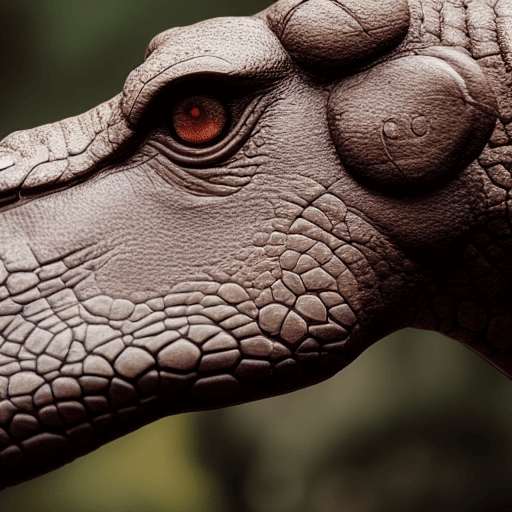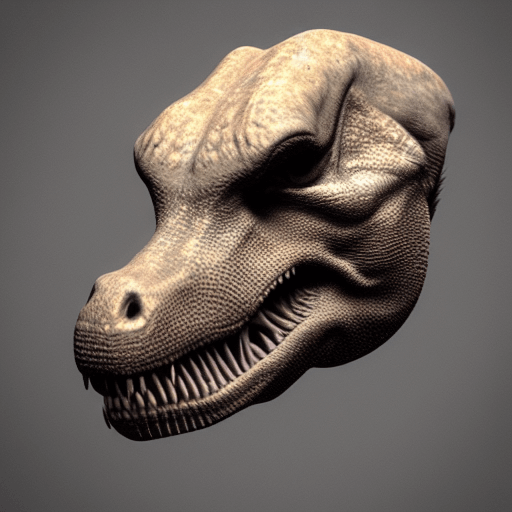Dinosaurs and ears…
Not words you often hear in the same sentence.
While dinosaurs are some of the most popular creatures on the planet. Little attention is given to their anatomy, case in point, their ears.
Do dinosaurs have ears? Let’s explore the topic of dinosaurs and their ears.
We will take a look at some of the most popular theories about dinosaur ears and what scientists have discovered.

Yes, dinosaurs had ears.
Explain It To A Child
Dinosaurs did have ears. However, they were not exactly like our human ears. For one thing, their ears were much smaller in proportion to their bodies. And instead of being located on the sides of their heads, their ears were situated further back, near the base of the skull.
They were probably very good at hearing things, too. In fact, many dinosaurs probably relied on their keen sense of hearing to survive since they couldn’t see very well. For example, the T-Rex is thought to have been a largely nocturnal animal because it had poor eyesight but terrific hearing.
Do dinosaurs have ears?
Yes! Dinosaurs did have ears.
Despite some differences from human ears, dinosaurs did have structures that served the same basic function as our ears.
Dinosaurs used their ears to primarily help them hear low-frequency sounds, which would have been essential for communicating with other members of their species.
So next time you’re watching a dinosaur movie, take a closer look at those tiny ear bumps on the side of the dinosaurs’ heads. They may not be as obvious as human ears, but they’re definitely there!
The most popular theories about dinosaur ears
The most popular theories suggest that dinosaurs had either moth-like or bird-like ears.
The moth-like theory suggests that dinosaurs had large, flat ears that were covered in hair.
This would have allowed them to hear low-frequency sounds and to sense the movement of air around them.

The bird-like theory suggests that dinosaurs had small, round ears that were similar to those of modern birds.
This would have allowed them to hear high-frequency sounds and to locate the source of a sound relatively accurately.
However, there is still no conclusive evidence for either theory, and the debate is likely to continue for many years to come.
What are the structures of dinosaurs’ ears?

Although dinosaurs are often thought of as ancient reptiles, they actually share a number of similarities with modern-day birds.
One of these is the structure of their ears. Like birds, dinosaurs had three bones in their ear, which helped to amplify sound waves.
In addition, the inner ear of dinosaurs was enclosed in a bony capsule, which protected it from damage. The outer ear was also relatively large, which helped to funnel sound waves into the inner ear.
This unique ear structure allowed dinosaurs to hear high-pitched sounds that would have been undetectable to other animals.
It is one of the many features that made dinosaurs such successful predators.
How do scientists study dinosaur ears and what they have discovered about it

Scientists have long been fascinated by dinosaurs, and their ears are no exception.
While we may not have any perfectly preserved specimens to study, there are a number of ways that scientists can learn about the anatomy of dinosaur ears.
- One method is to examine modern-day animals that are thought to be closely related to dinosaurs, such as crocodiles and birds. By studying the anatomy of these creatures, scientists can gain insight into how the ears of dinosaurs may have functioned.
- Another technique is to use computer models to reconstruct the ears of dinosaurs based on their skeletons. This allows scientists to get a detailed look at how the ear bones were arranged and how they may have interacted with each other.
By using these methods, scientists have been able to learn a great deal about the anatomy of dinosaur ears.
How do dinosaurs’ ears help them survive?
The ears of a dinosaur are one of its most important features. They help the creature to hear potential prey from long distances, and they also give it a keen sense of balance.
This is especially important for creatures that live in trees, as it helps them to avoid falling. In addition, the ears of a dinosaur are very sensitive, and they can pick up very faint sounds.
This is useful for both finding food and avoiding predators. As a result, the ears of a dinosaur are essential for its survival.
How well can dinosaurs hear?
Along with their size, another key characteristic of dinosaurs is their hearing. While the specifics vary from species to species, most dinosaurs had extremely sensitive hearing.
- This was likely due to their large body size, which made it difficult for them to pick up low-frequency sounds.
- As a result, they needed to be able to hear high-frequency sounds in order to communicate and orient themselves in their environment.
Additionally, their hearing was probably also helpful for detecting potential predators or prey. In short, while we may think of dinosaurs as being sight-oriented creatures, their hearing was actually just as important to their survival.
So, although we often picture dinosaurs as being deafeningly loud, they may have actually been quite good at listening.
Article Sources
Jacks of Science sources the most authoritative, trustworthy, and highly recognized institutions for our article research. Learn more about our Editorial Teams process and diligence in verifying the accuracy of every article we publish.
